Realizing Increased Photosynthetic Efficiency (RIPE) is an international research project that aims to engineer plants to photosynthesize more efficiently, and ultimately, increase the yields of staple food crops to improve global food security by 2050. The project begins its work with a model crop before applying successful traits into five food crops: cassava, cowpea, maize, rice, and soybean.
All of these staple food crops are vital to sustaining the health and livelihood of people all over the world. With the innovative and inspiring vision of RIPE, our scientists are identifying and addressing the inefficiencies in photosynthesis in these major food crops to increase yields and better feed the future.
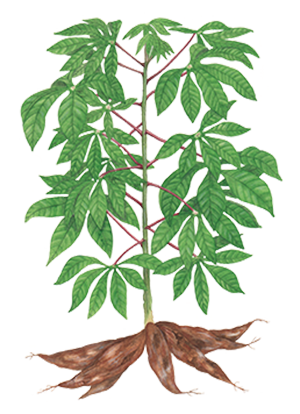
Cassava is a starchy, tropical root crop cultivated to produce goods such as cassava flour and tapioca. However, it is also responsible for sustaining more than 500 million people each day as their primary source of food. Since cassava can grow exceptionally well in poor soil conditions and dry environments, the crop plays an important role in people’s diets in regions such as sub-Saharan Africa and is considered virtually irreplaceable against hunger. As a leading producer of carbohydrates and energy among food crops, it is vital to increase cassava yield to help smallholder farmers in developing countries that depend on it for nearly 50 percent of their diets. Other than its role as a main food source, cassava is vital, particularly for African women, because it helps with paying for school fees for their children. This further underscores the heavy dependence on the crop for people’s livelihoods. In a RIPE study, our team has identified opportunities to improve cassava yields, which have barely changed for more than fifty years in Africa.
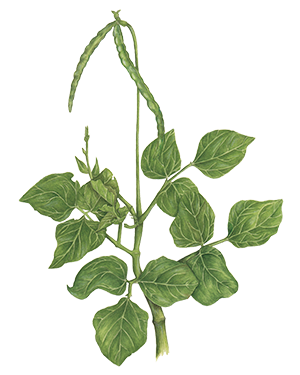
Cowpeas—also known as black-eyed peas—are one of the oldest domesticated crops in the world. Today, cowpea helps feed more than 200 million people daily. The crop offers a major source of protein and food security in addition to its multiple uses, including human consumption, hay for livestock, and as a cover crop to protect the soil. Due to its ability to grow in soils with little organic matter and erratic levels of rainfall, developing regions such as those in West and Central Africa rely heavily on the crop for sustaining people’s livelihoods. Cowpeas thrive in marginal, dry environments, which make this an important crop in semi-arid regions. Cowpeas are legumes and they fix the primary plant macronutrient nitrogen that can improve soil fertility and help increase the yields of other cereal crops when grown in rotation. Recently, Nigeria became the first country to approve the release to smallholder farmers, a genetically modified variety of cowpea that is insect-resistant. Across developing countries such as those in sub-Saharan Africa, 80 percent of cowpeas can be lost due to caterpillars and other hungry pests that feed on the crop. With the new engineered cowpea variety, smallholder farmers now have the opportunity to grow the crop that is resistant to some of these insects. RIPE has partnered with the scientists who developed these insect-resistant cowpeas to add our yield-boosting traits.
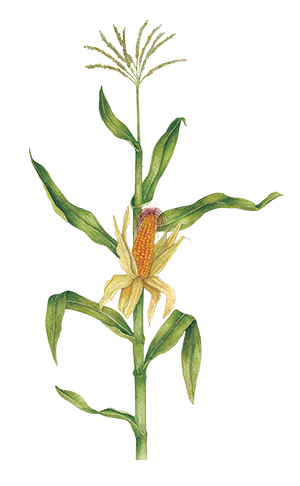
Maize—also commonly known as corn—is one of the world’s most popular cereal grains that was first domesticated by ancient farmers about 10,000 years ago in present-day Mexico. Since then, corn has spread to regions across the globe. Maize is grown for a variety of uses that range from livestock feed, food for human consumption, and raw material for industry. Maize can be used for cornstarch that can be broken down into corn syrup, which is a commonly used sweetener. Maize has become a staple food in many parts of the world, with the total production of the crop surpassing even that of wheat or rice. Maize is the most important staple in sub-Saharan Africa, serving as the primary stape for 300 million people across the continent.
The crop naturally photosynthesizes more efficiently via C4 photosynthesis so RIPE’s objectives, like work on photorespiratory bypass or RuBP Regeneration, won’t be applicable to maize. However, work is already underway to translate our relaxing photoprotection breakthrough to maize.
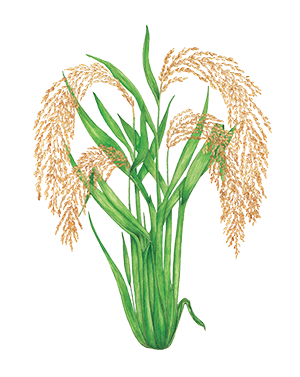
Rice is arguably the most important crop in the world. The grain feeds three billion people around the globe every day and accounts for 20 percent of all the calories that mankind consumes, underscoring its prevalent role in maintaining global food security. If consumption trends continue at this pace, it is estimated that 4.6 billion people will consume rice in 2025 and production must increase 20 percent to keep up with the demand. The crop is famously known for its unique ability to grow in wet environments that would drown other staple food crops. The main rice-producing countries are China, India, Japan, Indonesia, Thailand, and Myanmar. RIPE is committed to providing smallholder farmers in Southeast Asia with the project’s yield-boosting technologies to meet their needs and future demands for the crop.
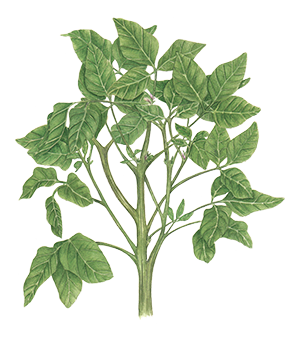
Soybean is one of the most important crops in the world. Originating in Asia, soybeans are the world’s largest source of protein and the second-largest source of vegetable oil. More specifically, only about 6 percent of soybeans grown worldwide are turned directly into food products for human consumption, while 70 to 75 percent of the world’s soy supply ends up as feed for chickens, pigs, and cows. The United States is the world’s leading producer of soybean—often grown in the Midwest in rotation with maize—and is the second-leading exporter. The popularity of soy has led to tropical deforestation. One of RIPE’s goals, by improving the plant productivity, is to grow more food on less acreage to remove and protect vulnerable land from crop production. RIPE researchers have already come closer to this goal by discovering that soybean plants may produce too many leaves and that by reducing the number of leaves, we could increase yields and conserve resources.
Our model crop
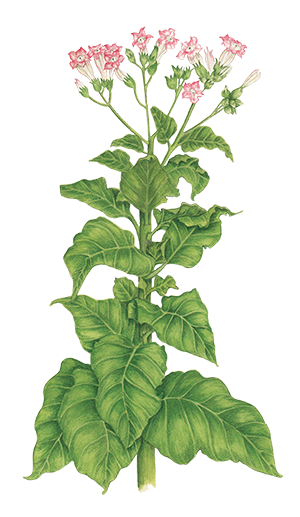
Tobacco is a special crop in that it is used to help carry out the mission of the RIPE project. RIPE’s vision is that by improving photosynthesis—the natural process that all plants use to convert sunlight into plant biomass—crop productivity would be boosted, allowing farmers all over the world to more safely and sustainably produce more food. However, the researchers needed a model crop to test their hypotheses. Tobacco, it turns out, is relatively easy to work with within the laboratory, greenhouse, and field, and results in this crop can be seen at a quicker pace compared to food crops that are more difficult and time consuming to modify and grow. Therefore, tobacco was chosen as the initial test crop to see if similar results can be proved and then mirrored in rice, cassava, cowpeas, and soybeans.
A major inefficiency in photosynthesis is that its major enzyme Rubisco has difficulty distinguishing between carbon dioxide and oxygen molecules. About 20 percent of the time, Rubisco fixes an oxygen molecule, instead of carbon dioxide, costing the plant energy it could have used to photosynthesize. RIPE researchers showed that by engineering an alternative pathway to shorten this process called photorespiration, this modification boosted tobacco growth—by up to 25 percent. Now the team is translating these findings into cowpea and soybean.
Written by: Amanda Nguyen || Illustrations by: Duli Sen
